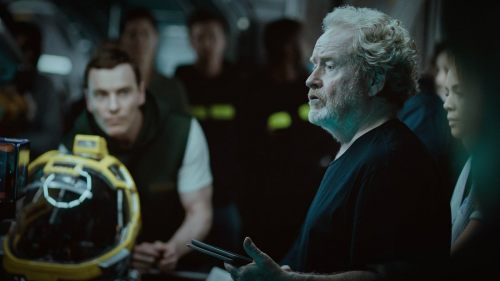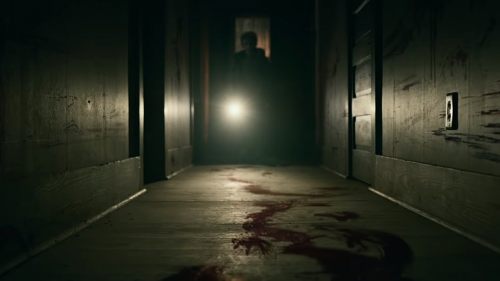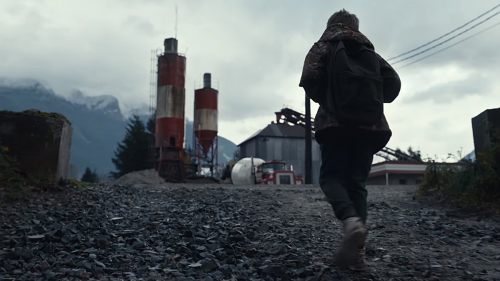Building Monsters: Guillermo del Toro’s Lifelong Fandom
The Shape of Water is in select theaters now. Get your tickets here!
The incredible creativity and art found in all of Guillermo del Toro’s creations stems not only from his lifelong desire to create, but also his lifelong status as a fan. del Toro has been widely recognized as one of the more inventive filmmakers out there. His distinctive visual style, especially as it applies to monsters and creatures of all kinds is an ode to a fandom that started when he was very young.
Growing up in Guadalajara, Mexico, del Toro discovered a copy of Famous Monsters of Filmland in a supermarket and his dedication to reading it was a key element in his becoming bilingual. His bedroom quickly filled up with comics and figurines, his favorite toy from this time a plush werewolf he sewed with the help of his aunt. But even at this young age, del Toro’s appreciation drove him to creation, from drawing creatures using his father’s anatomy books as reference to his first venture into film in high school: a short film about a monster that crawls out from a toilet only to be disgusted by the human race.
del Toro attended the Centro de Investigación y Estudios Cinematográficos and, after graduating, he published a book-length essay on the work of Alfred Hitchcock. Shortly after, he founded a special effects company called Necropia, and made reasonably-priced movie monsters for the Mexico City film scene.
“Producers would call me on Friday and say, ‘We need a monster on Tuesday,’” del Toro told The New Yorker in a 2011 interview. The monsters he made got a significant amount of screen time, too. “…It was so expensive to create a monster that, even if it was cardboard, they showed it a lot.”
del Toro’s familiarity with the nuts and bolts of creature creation is something that has always marked his work. From his first feature Cronos to his most recent film The Shape of Water, del Toro’s attention to detail pays off in the most horrifying and fantastic ways.
He also refuses to pick a side between pulp and art. When making Mimic in 1997, producers paired him with a second unit director to add what del Toro referred to as “cheap scares.” But pursuing his own visions of ghastly perfection was singularly important to del Toro, who returned half his salary for Hellboy and his entire salary for Pan’s Labyrinth to fund the creature effects that finances had ruled too expensive.
After Pan’s Labyrinth received an Oscar nomination for Best Foreign Language Film, del Toro was validated but still refused to give in to critics tempted to rebrand him as a more highbrow artist. He followed his award-winning darkling fairytale with Hellboy II, which climaxes with the destruction of an epic plant monster coating New York in green mossy blood: “There is a part of me that will always be pulp,” del Toro has said. “I don’t see myself ever doing a ‘normal’ movie. I love the creation of these things—I love the sculpting, I love the coloring. Half the joy is fabricating the world, the creatures.”
del Toro owns a legendary property in Westlake Village called “Bleak House.” Not far from the home he shares with his family, Bleak House is a creative wonderland and museum-like tribute to the things that inspire him and the things that he creates. Detailed life-size replicas of his creatures from Hellboy sit next to ornate paintings of Saint George and the Dragon, sketches by Edward Gorey and a mounted Malaysian stick bug over a foot long, bought during his childhood. A severed leg from Cronos shares space with an epic library with large sections for comics and different sections for vampire fiction and vampire fact.
del Toro collects because of his passion for these things, but also to inspire him. Just as his deceased pet stick bug would eventually become the inspiration for a pixie in Pan’s Labyrinth, so, too, do his collections drive him to create: “That’s why I collect images,” he said. “All this stuff feeds you back.”
The filmmaker still draws often, inking creatures in heavy leather-bound journals that look like works of art themselves. Sometimes they are designs for his next project, other time they are passing ideas that might serve as inspiration in the future.
He has spent a lifetime cultivating his monster-making education and many of his creations still begin in old school ways. He directs every creature to be made first in clay, even if CG is the ultimate goal, to be able to see the design clearly in tactile form. Part of his monster philosophy is that a creature should appear transformed when seen from a new angle. This keeps it fresh and keeps the audience in awe.
His uncompromising eye and fan’s heart have led del Toro from one genre-blending masterpiece to another and have also let him reach a position where he can choose his projects carefully and passionately. Fans have much to look forward to as del Toro continues to unleash new monsters and stories from the rich tapestry that has been inspiring him since he was a child.



